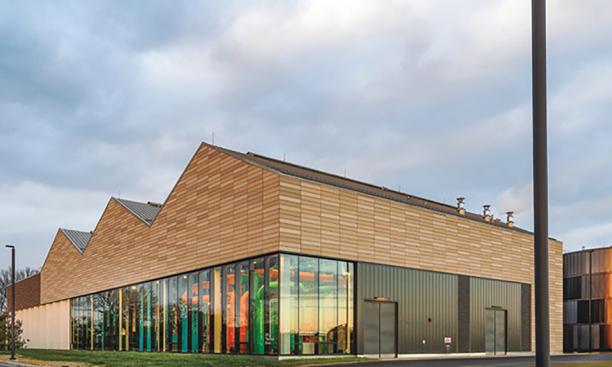
Seven years into the largest building program in Princeton University’s history, the main ribbon-cutting phase is underway.
Over the next three years, we’ll be completing a major new facility every several months, including a new graduate housing complex (2024), a spectacular new art museum (2025), new fitness and health centers (2025), and an entirely new multi-building neighborhood for environmental science and engineering disciplines (2025). Hobson College will open in the spring of 2027, ushering in another smaller building wave to include a new institute for quantum science and engineering.
As transformative as these new developments will be, perhaps the most significant impact of Princeton’s historic construction campaign is taking root hundreds of feet below the campus. That’s where, in more than 1,200 bores, each the length of a skyscraper, Princeton is laying the groundwork, literally, for one of the largest “geo-exchange” systems ever built at a university.
The environmental benefits of this alternative heating and cooling system are simply staggering. Geo-exchange will help eliminate the University’s reliance on fossil- fuel-powered heating and cooling. Along with energy conservation, on-campus solar power, and renewable power from the grid, it will enable the University to make good on our net-zero emissions target of 2046. The new system will also reduce campus water consumption by 20 percent. It requires minimal maintenance, produces no emissions, and pays for itself over time.
There’s more good news. Unlike some engineering marvels, this one is easy to understand and explain. The system uses the rock below campus as what our facilities team calls a “thermal piggy bank,” where heat drawn out of buildings in the summer by air conditioning systems can be stored for reuse in the winter. Basically, the rock is a battery for thermal energy storage.
With a loop of pipes and the bores across campus, we can move water from above ground through the earth (“geo”) to change its temperature. The water inside the pipes absorbs or releases (“exchange”) heat from the earth below ground. Heat pumps then provide water at just the right temperature for campus heating and cooling with very high efficiency.
You may wonder, if this abundant and clean energy source is so simple to access, why hasn’t Princeton tapped it at scale until now, and why are we unusual in doing so? The answer is that the effort required for this campus-wide conversion is immense and inevitably disruptive.
It entails installing over 13 miles of new distribution pipes to convert more than 180 buildings from gas-powered steam heating to highly efficient electric heating and cooling that draws energy from the geo-exchange bores.
It means dramatically expanding solar power on campus to help ensure that the electricity powering this new system comes entirely from renewable sources. It requires building large new utility buildings to house the heat pumps, water tanks, and other equipment necessary to deliver geo- exchange energy on a large scale. It will cost hundreds of millions of dollars over 30 years (though we’d spend almost as much maintaining or replacing our 150-year-old steam pipes and accompanying infrastructure).
In short, it’s the sort of project that requires many years of planning and makes the most sense when done in conjunction with a commensurately large construction campaign, to minimize added disruption. Like so many other audacious bets for humanity at Princeton, it’s made possible by our endowment and a board of trustees truly committed to sustainability and ultra-long-term thinking, befitting an institution approaching its 300th birthday.
That long-range perspective is especially manifest in the Meadows Neighborhood on the south side of Lake Carnegie. Nearly a century ago, the University trustees had the foresight to purchase land that Princeton might need in the distant future. We now have a geo-exchange infrastructure there that will undergird projects for the coming century.
By 2035, Princeton University will be almost entirely off steam, and our pioneering geo-exchange system will be running at full capacity. It will be clean and quiet and invisible. But I hope it is not too invisible.
If Princeton’s efforts benefit only our campus and the immediate environment, it will not fulfill its potential to inspire others to take similar steps, as our energy plant director, the aptly named Ted Borer, has noted. “Princeton has the opportunity to lead by example,” Borer said. “We can influence thousands, tens of thousands, even millions of others by our actions on this campus.” 1
I hope all our alumni take pride in this initiative and spread the word to friends and colleagues.
1 Valenti, Denise. “Going Deep: Princeton Lays the Foundation for a ‘Net-Zero’ Campus.” Princeton University, November 9, 2021. https://www.princeton.edu/ news/2021/11/09/going-deep-princeton-lays-foundation-net-zero-campus.
